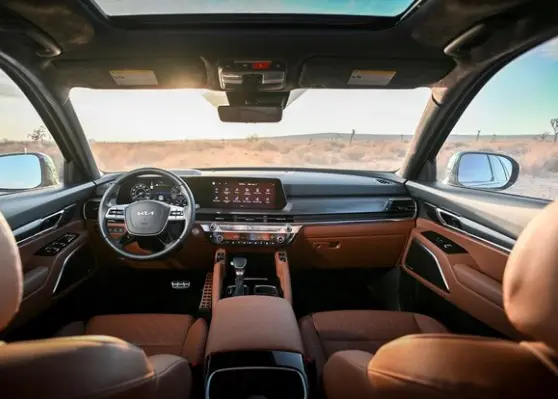As the world becomes more environmentally conscious, the automotive industry is following suit by offering eco-friendly car interior choices that combine sustainability with elegance.
Car manufacturers are increasingly embracing sustainable materials and design principles to create interiors that not only reduce their environmental footprint but also offer a touch of luxury.
In this article, we’ll explore the concept of sustainable elegance in car interiors and the choices available to environmentally conscious car owners.
1. Sustainable Materials
One of the cornerstones of eco-friendly car interiors is the use of sustainable materials. This includes:
**a. Recycled Materials:** Recycled materials like recycled plastics, fibers, and fabrics are used in car interiors. For example, seats and carpets can be made from recycled PET bottles, reducing the need for new resources.
**b. Vegan Leather:** Vegan leather, also known as synthetic or faux leather, offers a cruelty-free alternative to traditional leather. It’s made from synthetic materials like polyurethane and does not involve animal products.
**c. Cork Accents:** Cork, a renewable resource, is used for various interior components, including dashboard trim, steering wheel accents, and gear shift knobs.
**d. Sustainable Wood:** Car interiors can feature wood sourced from sustainable forests or reclaimed wood from old structures, reducing deforestation and waste.
**e. Natural Fibers:** Natural fibers like hemp, organic cotton, and bamboo are used in upholstery and interior components, offering a more sustainable alternative to synthetic fabrics.
**2. Reduced Carbon Footprint**
Eco-friendly car interiors also focus on reducing the carbon footprint associated with manufacturing and transportation. Car manufacturers are increasingly sourcing materials locally to minimize transportation emissions and implementing energy-efficient manufacturing processes.
**3. Low-VOC Materials**
Volatile Organic Compounds (VOCs) are chemicals that can off-gas from interior materials, contributing to poor air quality. Eco-friendly interiors use low-VOC or VOC-free materials, ensuring that the air inside the car is healthier for both passengers and the environment.
**4. Sustainable Production**
Car manufacturers are adopting sustainable production practices, including waste reduction and recycling programs within their factories. This not only reduces the environmental impact but also demonstrates a commitment to responsible manufacturing.
**5. Energy-Efficient Components**
Advanced technology, such as LED lighting and energy-efficient climate control systems, is integrated into eco-friendly car interiors. These components reduce energy consumption and contribute to a more sustainable driving experience.
**6. Long-Lasting Durability**
Eco-friendly materials are often chosen for their durability, ensuring that the car’s interior will stand the test of time. This reduces the need for replacements and extends the life cycle of the vehicle.
**7. Luxury and Comfort**
Contrary to the misconception that eco-friendly means sacrificing luxury, many sustainable car interiors are designed with elegance and comfort in mind. Vegan leather, for example, can be just as luxurious as traditional leather, offering a premium feel without harm to animals.
**8. Customization Options**
Car manufacturers are offering customization options that allow buyers to select eco-friendly interior materials and color schemes that align with their personal style and values. This level of personalization allows environmentally conscious consumers to create a car that is both stylish and sustainable.
**9. Future Innovations**
The trend toward sustainable elegance in car interiors is expected to continue evolving. Future innovations may include the use of advanced materials like mushroom leather and algae-based fabrics, as well as more extensive use of recycled and upcycled materials.
**Conclusion: A Greener and More Elegant Ride**
Sustainable elegance in car interiors represents a harmonious blend of luxury and environmental responsibility. Car owners who prioritize eco-friendliness can now enjoy a range of stylish options that align with their values. By choosing eco-friendly materials and supporting manufacturers committed to sustainability, consumers contribute to a greener automotive industry while enjoying the comfort and elegance they desire. The future of car interiors is one where sustainability and elegance go hand in hand, creating a more responsible and stylish driving experience for all.

